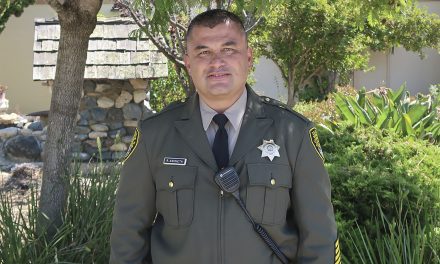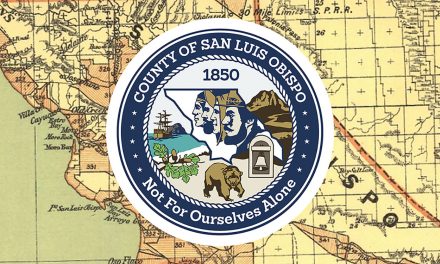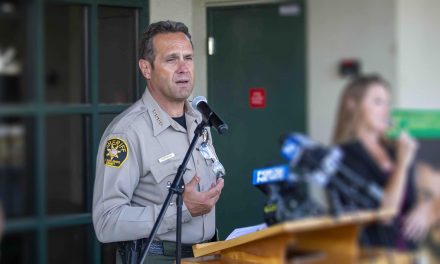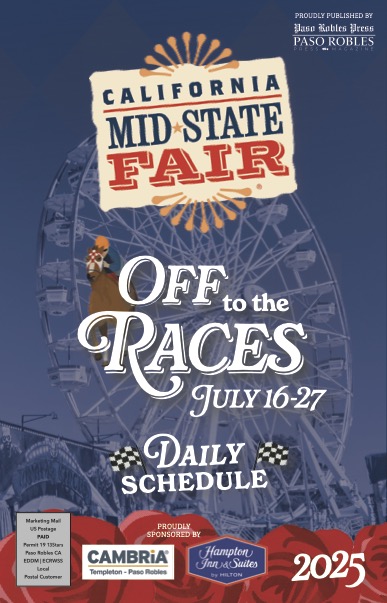Staff proposes new Homeless Operations Center and Homeless Division; oversight committee also suggested
SAN LUIS OBISPO COUNTY — The San Luis Obispo County Board of Supervisors met for its regular meeting Tuesday, April 19, with the most notable agenda item being in the afternoon session, when the board fielded a request to provide direction to the staff in regards to the countywide (and statewide) issue of homelessness.
After the board reconvened for the afternoon session, Joe Dzvonik, the principal homeless analyst for the county, introduced his presentation on the topics staff was seeking direction on. They included:
- Update on the Aug. 10, 2021, Spending Plan on Homeless Initiatives
- The draft San Luis Obispo Countywide Strategic Plan to Address Homelessness
- Approval for staff to evaluate development of a proposed County Homeless Operations/Coordination Center
- Approval for staff to pursue the establishment of a Homeless Division with the County Department of Social Services
Assisting in the presentation was Atascadero City Councilmember Susan Funk, who is also chair of the board’s Homeless Services Oversight Council.
Funk outlined the services being provided to the homeless currently, including shelters, the safe-parking policy, housing support, and outreach, but said while year-round emergency capacity increased 73 percent in the past year, the county can still house only 20-30 percent of those considered homeless.
“Essentially, we brought a garden hose to a house fire,” Funk said.
Dzvonik continued with the presentation, proposing a Regional Homeless Action Committee comprised of county staff, city managers, and nonprofits. He also suggested the proposed Homeless Operations/Coordination Center be placed at the Oklahoma Avenue building that used to be home to the former Animal Services Center.
During supervisors’ questioning, 1st District Supervisor John Peschong welcomed the attempt to get different departments and organizations together on the homeless issue, noting there are 17 programs aimed at helping the homeless, and they are spread out over 15 departments.
One issue that Peschong had is that efforts to help the homeless can be hindered by addictions or mental health problems a homeless person may have.
“In the core of the homeless program, they’re not in shelters because of addiction or mental health,” he said. “They won’t seek help, and we don’t have a way to compel them to do so.”
Dzvonik said he has discussed with other counties their efforts to push people to seek treatment, but the results have been mixed.
District 5 Supervisor Debbie Arnold echoed Peschong’s sentiments about the homeless efforts being hindered by addictions and mental health, and suggested another group might be added to the RHAC.
“In this group, let’s not forget the people in our hospitals,” she said. “We need to work with them and with law enforcement. We need a way to get people help and people aren’t willing to participate.”
The item then went to public comment, which drew a large number of people waiting to weigh in on the topic, including many city officials.
One idea brought up multiple times during public comment was the proposal to establish a Citizen’s Oversight Committee to advise the board on homeless issues. Among them was Sam Blakeslee.
“We would like to add the [oversight committe],” he said. “There needs to external oversight.”
Michael Renault of Templeton brought up the issue from another point of view, reading a statement from his partner Valerie Stern, a mental health worker, who was injured being thrown from her horse during a trail ride. The horse was allegedly spooked by a couple of dogs in the Salinas Riverbed, and afterward was verbally confronted by a homeless person.
Stern’s statement, read by Renault, said that filing a report with the sheriff’s office was “an ordeal” and animal services said they couldn’t do anything about the dogs.
“These homeless have been here for years now,” Stern’s statement continued. “They’re not trying to pull themselves up and use the system. They are choosing this lifestyle.”
The next speaker, Lindy Owen, a frequent advocate for the homeless at county meetings, said the story from the Salina Riverbed was a reason why the county needs to find facilities for the homeless.
Owen also was pleased with the overall proposal from the county.
“This is nice to see,” she said. “The only thing is there’s a lot of cooks in the kitchen. We need to pare that down.”
After public comment, the supervisors wrapped up with their comments.
District 3 Supervisor Dawn Ortiz Legg addressed the issue of some homeless not getting help, and suggested that may not necessarily be the case.
“I was told about a person in a warming center who came out of the riverbed several times before he agreed to get help,” she said. “I think it’s not that they won’t get help, but they just don’t realize the resources are there.”
District 4 Supervisor Lynn Compton was happy with what was proposed, but warned they can’t really do it step-by-step.
“I was concerned that we were talking about housing first before treatment,” she said. “They need to happen at the same time.”
All the supervisors agreed with the concept of a citizen’s oversight board, although Compton wanted to make sure it wouldn’t get too large (“They can get too big and ineffective”), and District 2 Supervisor Bruce Gibson wondered if the HSOC could somehow be turned into some kind of advisory board.
The supervisors directed staff to go forward on the four aspects introduced by Dzvonik, and added in an evaluation of a potential citizen’s oversight board before adjourning.















